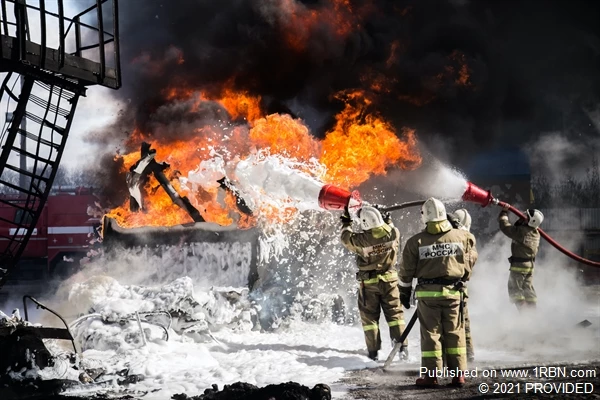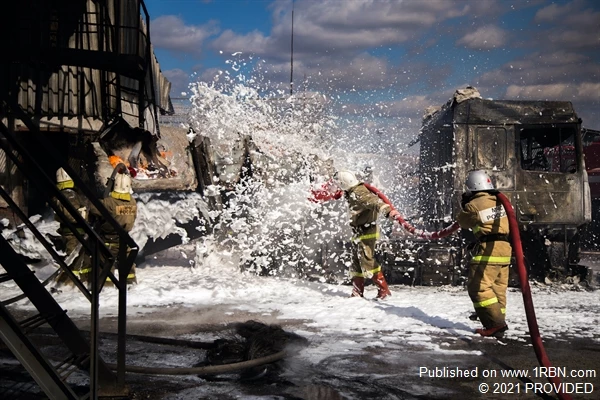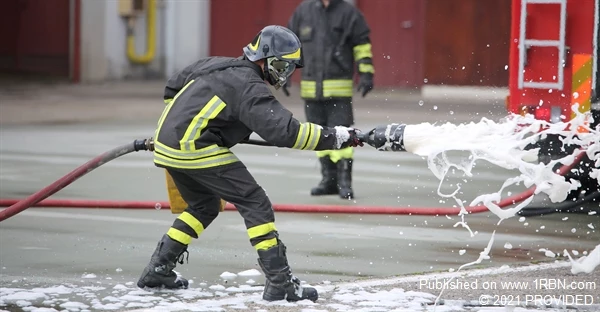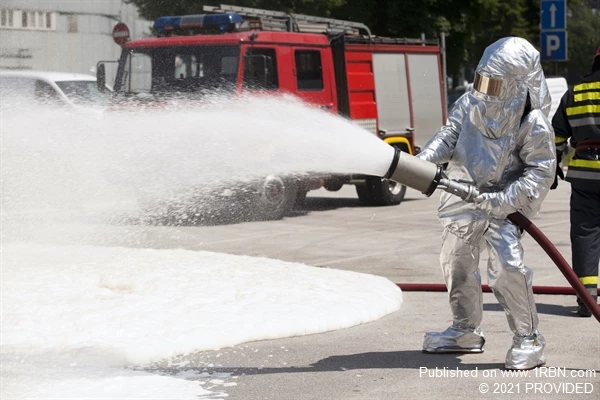Firefighters Risk Health when Exposed to AFFF Firefighting Foam
February 18, 2021 | NATIONAL


Photo by PROVIDED

Photo by PROVIDED

Photo by PROVIDED

Photo by PROVIDED
Firefighters work in a dangerous environment every single day. They knowingly risk their lives in service to others and their community as part of the job description. Their willingness to protect us in the face of unthinkable danger is part of what makes them heroes.
Firefighters understand the risks of the flames and deteriorating buildings. They have seen their colleagues suffer burns, broken bones and the complications caused by smoke inhalation. While we all know and acknowledge running into a burning building is dangerous, firefighters are often exposed to life-threatening hazards that are not as obvious. One of the most-deadly hidden dangers is not presented by the fire, but by one of the tools these brave men and women are provided to fight it.
Aqueous Film Forming Foam (AFFF) is a fire suppressant found on most fire trucks and at fire training facilities. It is a human-made chemical designed to coat and suffocate a fire, depriving it of oxygen. While AFFF Foam may be an effective fire suppressant, it also may contain perfluorooctane acid (PFOA) and perfluorooctanesulfonic acid (PFOS). These per- and polyfluoroalkyl substances (PFAS) are part of a large family of dangerous man-made chemical compounds that are known carcinogens – meaning we know they can cause cancer.
These substances can accumulate and remain in the human body for long periods of time. It is this long-term exposure that creates an increased risk of various deadly cancers, including pancreatic cancer, kidney cancer, leukemia, testicular cancer, ovarian cancer and prostate cancer.
For men and women fighting fires, the harmful chemicals can be orally ingested, absorbed through the skin or inhaled.
These dangers are now well-documented. The U.S. Fire Administration now cautions that fire departments should replace older AFFF stocks with fluorine-free foam solutions. It advises handlers of these dangerous chemicals to wear personal protective equipment (PPE) and a self-contained breathing apparatus. It also advises firefighters to shower within one hour after returning to the station or home, among other warnings.
Despite these relatively new warnings and awareness, the manufacturers of AFFF have known of these dangers for years and knowingly exposed our nation’s firefighters to these cancer-causing substances - putting profits over the safety of our heroes.
“If you or a loved one has been diagnosed with cancer after being exposed to AFFF firefighter foam, you may have a claim against the manufacturers and should seek counsel,” Ms. Liakos of Bond Legal said.
If you have been exposed to AFFF firefighter foam on the job and developed cancers or other side effects, contact Bond Legal to discuss your potential claim for justice and compensation at 866-927-1261 or intake@bondlegalgroup.com.
CANCERS CAUSED BY PFAS
Some potential cancers that are caused by PFAS chemicals in AFF:
Bladder
Breast
Colon/Rectal
Kidney
Leukemia
Lymphoma
Liver
Neuroendocrine
Pancreatic
Prostate
Ovarian
Testicular








